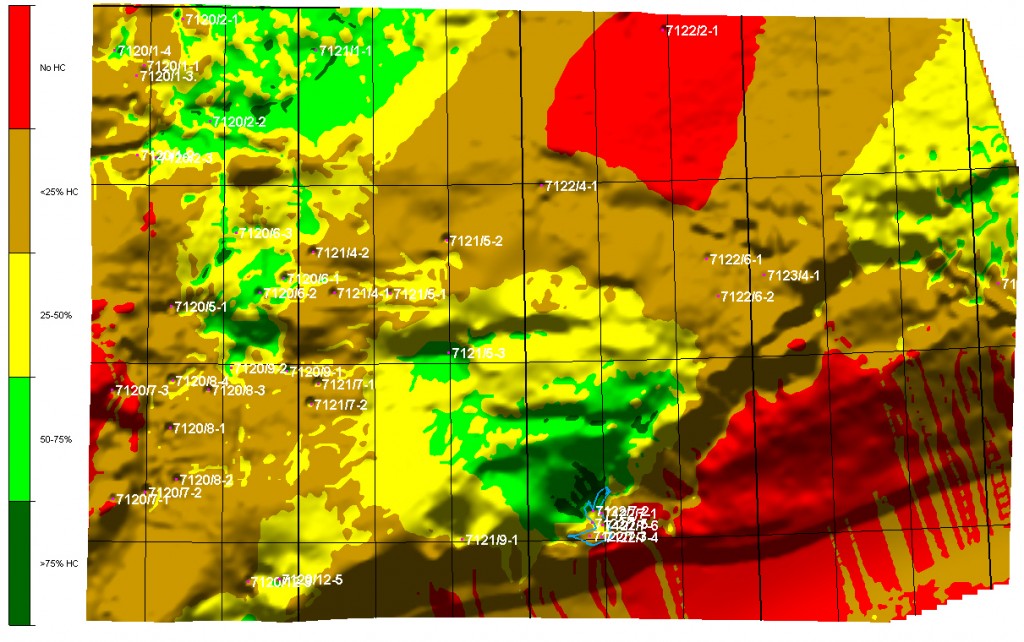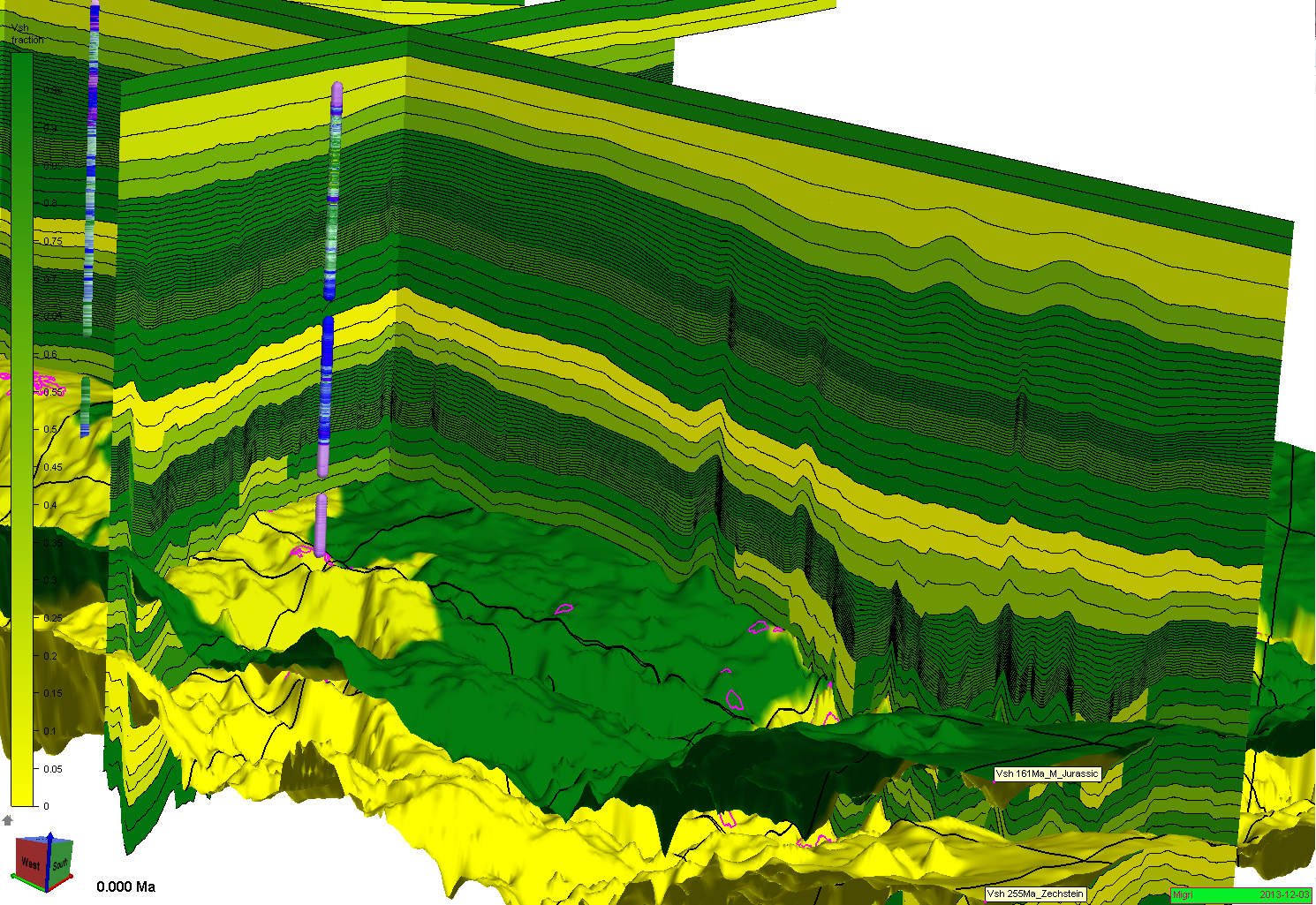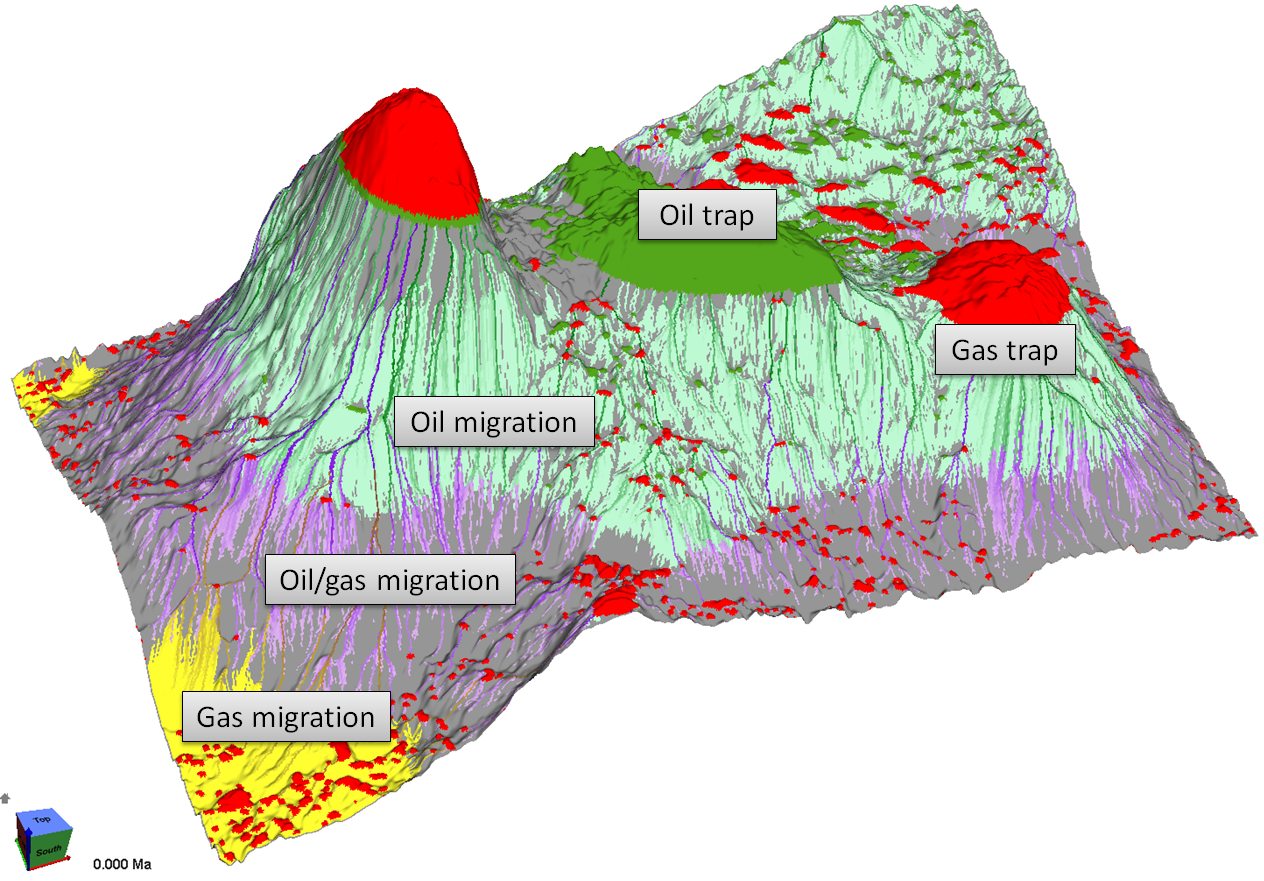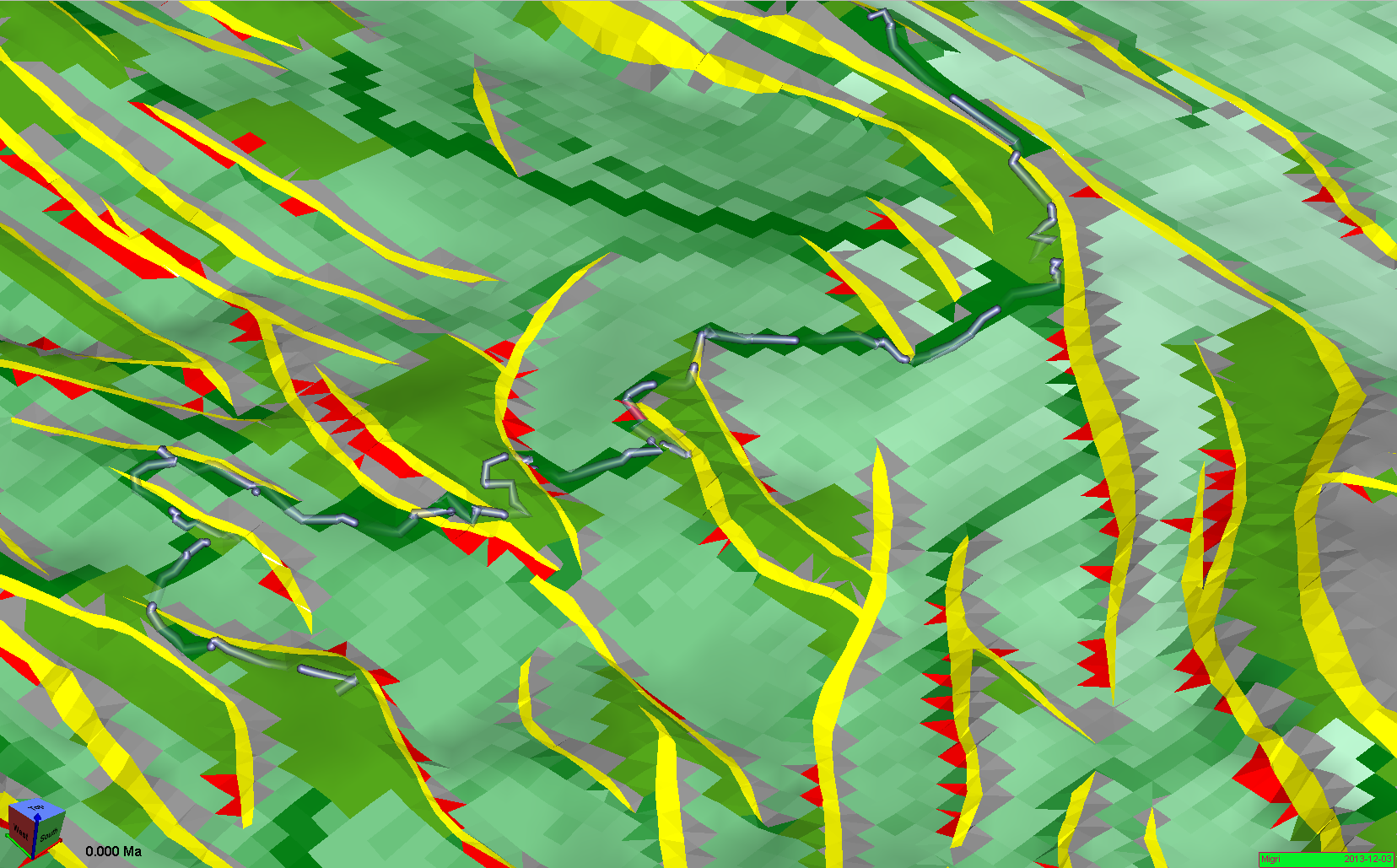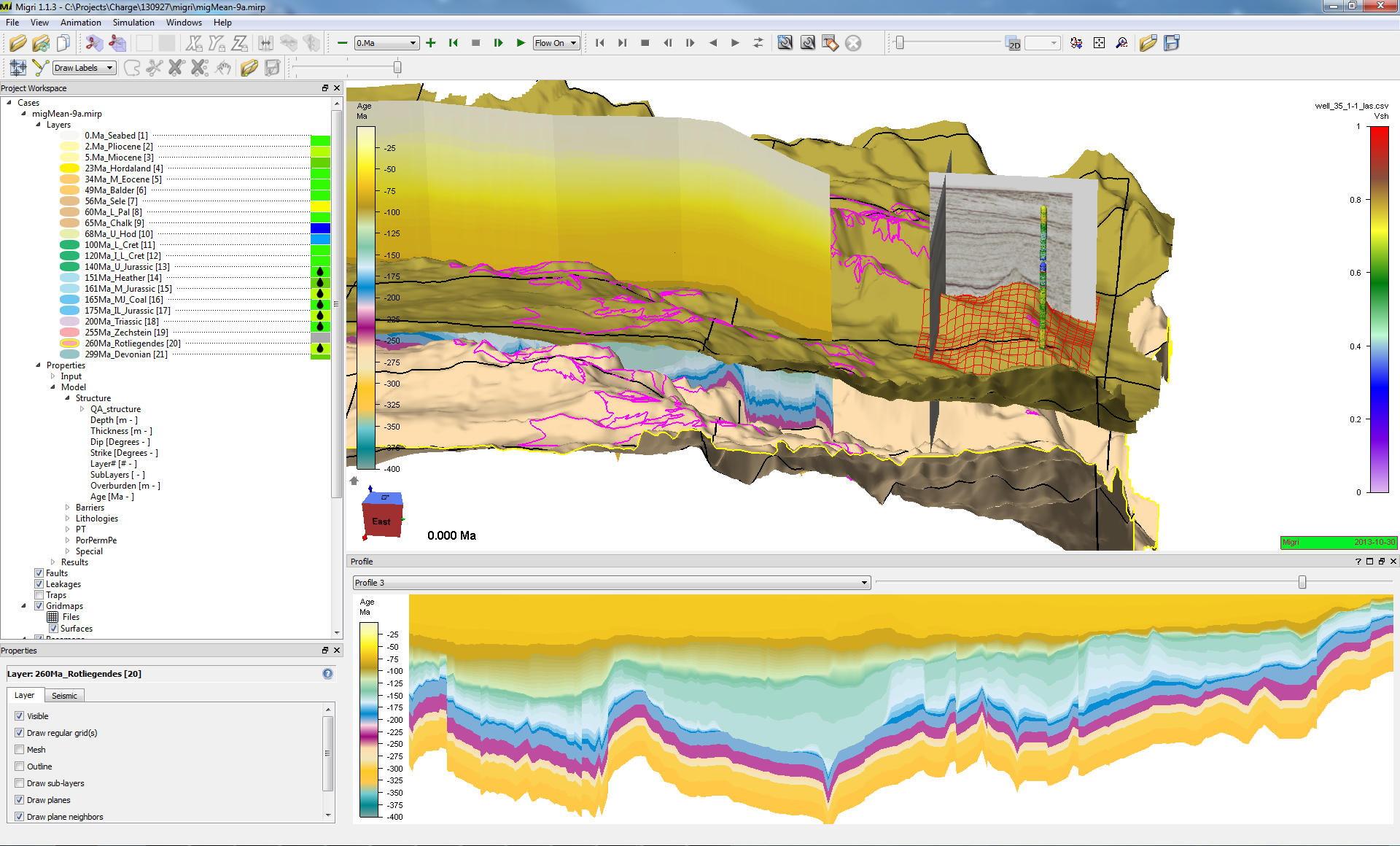MIGRI
Migri simulates, animates and visualizes the migration of hydrocarbons through 3D models. The basin modelling software combines probabilistic Monte Carlo techniques with innovative migration modelling process description to reduce geological uncertainties and assess the petrolem systems and charge risks. The aim is to perform simulations at seismic resolution with complex geometries while retaining interactivity to allow for high turn-around of analysis results. The visualization solution is tightly coupled with the simulator in an interactive system. This enables exploration geologists to run many alternative scenarios in hours rather than days.
Features:
- Simple and intuitive drag and drop model building
- Detailed numerical description of migration as a geological process
- Import complete histories from other 3d simulators
- Fast numerical schemes
- Sub-layer scheme allows for simulation at or below seismic resolution
- Advanced fault and leakage process description
- Trap charge history and volumetrics
- Quick-look migration and drainage area analysis
- Run Monte-Carlo probabilistic simulations
- Multi-case sensitivity analysis
- Export results as grids, figures or animations
CONCEPTS
The main purpose of using Migri is to study and describe uncertainties of the petroleum system of a field, trap or prospect. Migri therefore takes a probabilistic approach to the simulation of hydrocarbon migration. The probabilistic results are obtained by running many deterministic simulation runs with input for each run taken from a probabilistic description of the input variables. Input variables are supplied as e.g. normal distribution maps for each layer. A deterministic Migri simulation run is therefore just a simulation with the mean of all parameters used as input.
Migri simulates the hydrocarbon generation and migration history of the basin as a series of time-steps and will visualize results interactively after each time step using a simultaneous simulation and visualization technique. For each time-step the geometry is reconstructed, the geological and flow properties are calculated, the thermal field and generation from source rocks is determined and migration is simulated for the expelled hydrocarbons.
Migri uses a dynamic flowpath technique to transport hydrocarbons from their generation location, via primary migration, secondary migration and into structural and/or stratigraphic traps. The processes of tertiary leakage and spill are also simulated through time. Migration is modeled to occur in regular and/or irregular mesh elements and may be influenced by sealing faults in a model typically close to the seismic scales in resolution. Hydrocarbon saturations within the computing nodes are considered to be non-constant and hysteresis leakage effects are c

